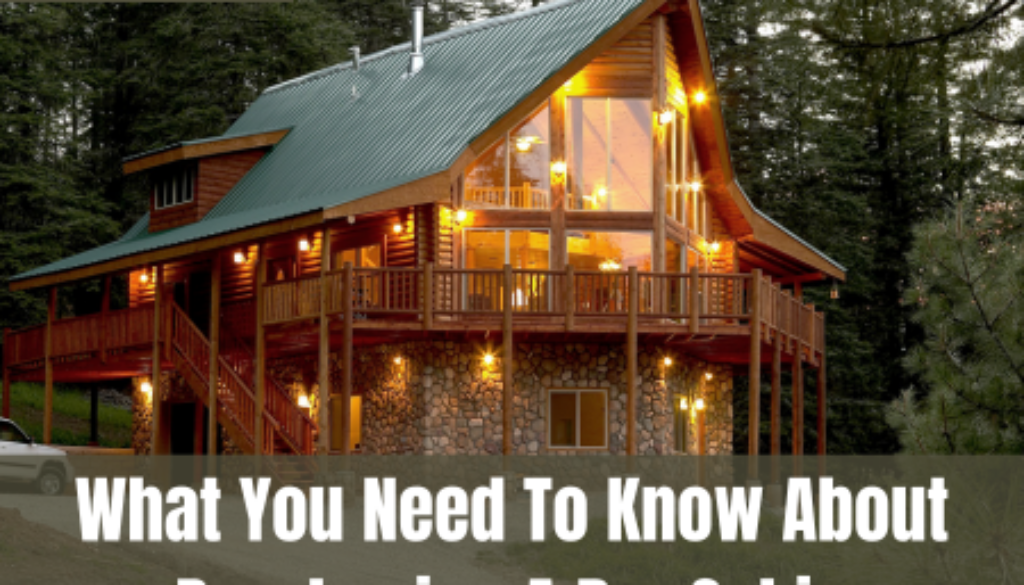What You Need To Know About Purchasing A Dry Cabin
A dry cabin, often regarded as a rustic retreat, embodies a unique form of accommodation that embraces simplicity and self-sufficiency. Unlike conventional living spaces, a dry cabin lacks the luxury of running water and traditional plumbing facilities. Purchasing a dry cabin entails acquiring a property or cabin where access to a piped water supply and standard plumbing infrastructure is absent. This distinctive lifestyle choice beckons individuals or families seeking a closer connection with nature, a respite from urbanity, and a chance to embrace a more minimalistic way of life.
What You Need To Know About Purchasing A Dry Cabin
Here are a few key aspects of purchasing a dry cabin:
Basic Amenities/Water Source
Basic amenities in a dry cabin are designed to provide functionality while embracing a more simplistic lifestyle. Although these cabins do offer electricity for lighting and powering essential appliances, such as refrigerators or cooking devices, they typically lack the more commonplace features like showers, toilets, sinks, or other plumbing fixtures. This absence of traditional plumbing necessitates alternative water sources, such as wells, nearby bodies of water like streams or lakes, or the laborious task of hauling water in containers from external sources. Accessing water for drinking, cooking, and cleaning purposes requires careful consideration and planning.
Off-Grid Living
Living in a dry cabin is often associated with off-grid living, where individuals rely on alternative energy sources like solar panels or generators to meet their electricity needs. Embracing this lifestyle requires a sense of self-sufficiency and the ability to efficiently manage limited resources. Residents may find themselves installing solar panels to harness the sun’s energy or utilizing generators to power their electrical appliances and lighting systems.
Maintenance & Upgrades
Maintaining and upgrading a dry cabin may be necessary to enhance the overall living conditions. The extent of these efforts depends on the initial condition of the cabin at the time of purchase. Investments might include the installation of a composting toilet, a rainwater collection system for sustainable water usage, or other water-conservation measures to optimize resource management.
Lifestyle Considerations
The decision to purchase a dry cabin is often made by those seeking a departure from the complexities of urban living, opting for a simpler and more self-reliant lifestyle. It provides a unique opportunity to connect with nature, bask in solitude, and reduce dependency on modern conveniences. For individuals and families alike, the allure of a dry cabin lies in the chance to embrace a slower pace, find harmony in natural surroundings, and experience a heightened sense of self-sustainability.
Things To Look For Before You Buy A Dry Cabin
Location
Assess the location of the dry cabin, considering factors such as proximity to amenities, access to roads, nearby water sources, and the surrounding natural environment. Determine if the location aligns with your preferences and lifestyle.
Land Ownership & Legal Considerations
Ensure that the land on which the dry cabin is situated is owned by the seller or has clear legal documentation. Verify any zoning restrictions, building permits, or regulations that may affect the property and its intended use.
Condition Of The Cabin
Thoroughly inspect the condition of the dry cabin, both structurally and aesthetically. Look for signs of wear and tear, and potential issues with the roof, walls, flooring, and any other components. Assess if any repairs or renovations will be required and consider the associated costs.
Water Source & Accessibility
Determine how you will access water for drinking, cooking, and cleaning purposes. Consider the availability and reliability of alternative water sources such as wells, nearby bodies of water, or hauling water in containers. Evaluate the practicality and sustainability of the chosen water solution.
Off-Grid Infrastructure
If the dry cabin is off-grid, examine the existing infrastructure for alternative energy sources. Assess the condition and capacity of solar panels, generators, or other energy systems. Consider the efficiency and reliability of the systems and determine if any upgrades or maintenance will be necessary.
Waste Management
Explore the options for waste disposal, particularly in terms of human waste. If the cabin does not have a septic system, investigate alternative solutions like composting toilets or other environmentally friendly methods.
Access & Transportation
Consider the accessibility of the dry cabin, especially during different seasons. Evaluate the condition of roads leading to the property and determine if they are suitable for year-round use. Assess if you’ll require a four-wheel-drive vehicle or other transportation means to reach the cabin.
Future Development & Expansion Potential
Determine if there are any restrictions on future development or expansion of the dry cabin. Research local regulations, permits, and any limitations that may affect your plans for the property.
Financial Considerations
Evaluate the cost of purchasing the dry cabin, including any associated fees, taxes, or maintenance expenses. Consider your budget and the long-term financial implications of owning and maintaining the property.
In Conclusion
Engaging professionals such as real estate agents, home inspectors, or contractors experienced in dry cabin properties can provide valuable insights and guidance throughout the buying process. Conduct thorough research and due diligence to ensure that the dry cabin meets your expectations and fits your desired lifestyle. For more information on real estate purchases in Snohomish, contact us!




